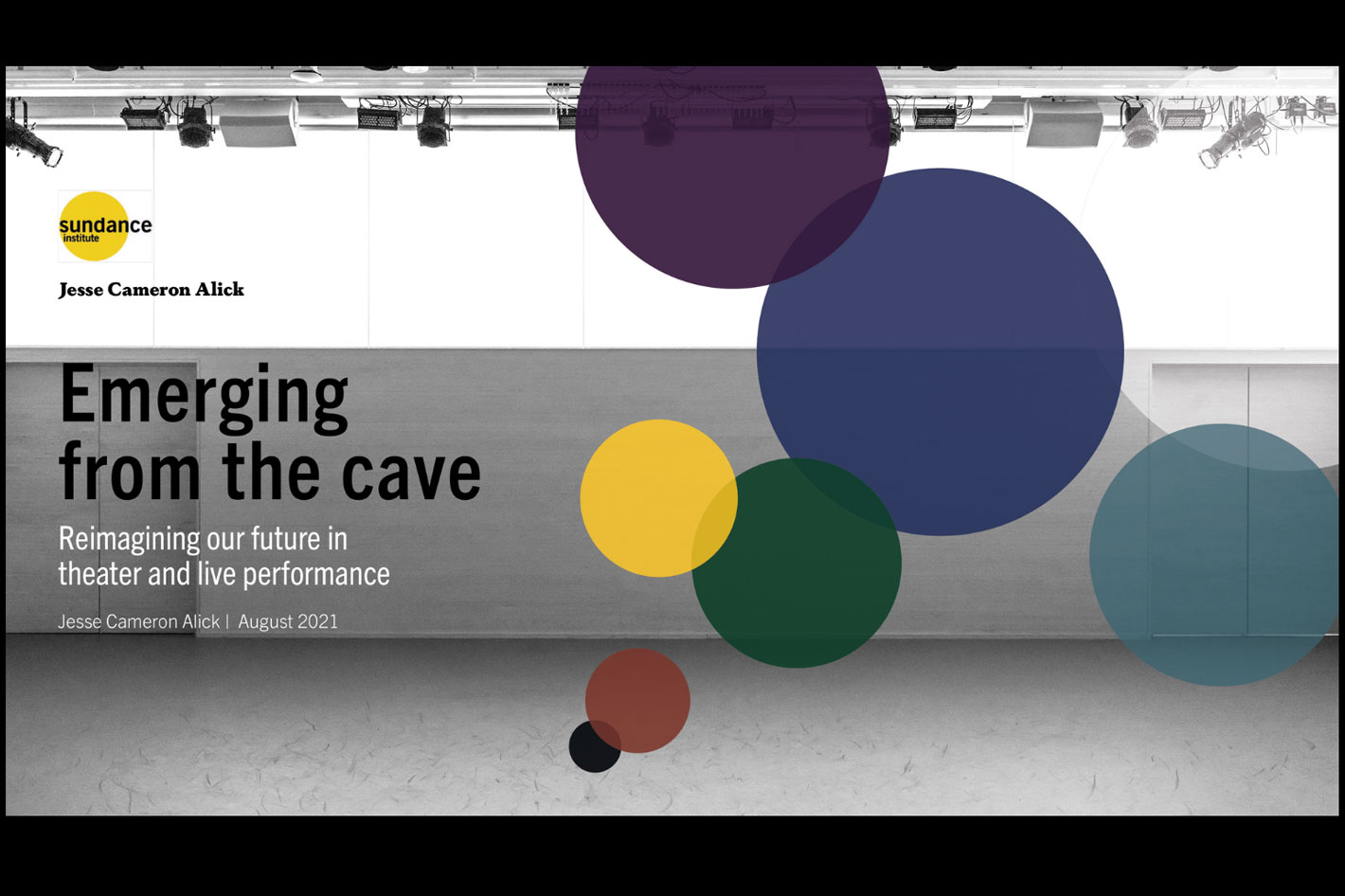
In early 2021, nearly a year into a global pandemic, Sundance Institute commissioned Jesse Cameron Alick, the newly-appointed Associate Artistic Director for the Vineyard Theater in New York and past creator advisor to the Institute’s Theater Program, to launch an in-depth field study to hear directly from theater makers about the most urgent needs of artists and the field. The report that resulted yielded the work now published: Emerging from the Cave: Reimagining Our Future in Theater and Live Performance.
Study provides insights about the future of the industry and the enormous challenges theater faces moving forward from over 70 theater professionals and live performance professionals. Between January and April 2021, Alick interviewed artists, administrators, donors and leaders from around the world about their experiences during the pandemic with the Black Lives Matter uprising and the summer’s racial equity reckoning; what they learned, what they lost, the state of the industry now and their thoughts on how to bring the field back in a stronger, more equitable and more vibrant way.
The independent study conducted with industry professionals from around the globe features 40 women; 34 men; and 2 gender-nonconforming individuals, with a total of 5 trans participants. And 72% BIPOC artists are represented with 22 identifying as Black; 21 White; 13 Latinx; 9 AAPI; 5 MENA; 3 South Asian; and 3 Native/Indigenous.
“We are beginning a conversation that we hope artists, funders, and organizations will continue in order to provoke new modes of support. We understand that some of these issues are not solvable by arts organizations alone. In fact, we feel strongly that a lot of the solutions need to originate from places outside the institutions,” said Keri Putnam, CEO, Sundance Institute. “We are inspired by the common themes, the provocations, the power of collective action that is embedded in these calls to action from across the field. We hope people will read, discuss, and engage with the conversation started in this study, presented and collected by Jesse Alick.”
“When the pandemic hit, I truly didn’t know what to do,” said Jesse Cameron Alick. “I saw my industry fall apart overnight and the art I love rendered impotent as all my friends immediately went on unemployment. A way out felt impossible. But when summer hit and we poured into the streets in the Black Lives Matter protests, a conversation about the future of the field started which I found comfort and hope in. I started to listen to people much smarter than myself. With the help and support of Sundance Institute, this study is the result of that journey. It belongs to the great arts workers that I interviewed but in a very real way it also charts the way I found my way out of darkness and into possibility.”
With people starting to emerge from their caves, this study is a snapshot of where theater and live performance stand more than a year after current constrictions began, and a road map from some of the most creative and visionary minds in the field: a possible compass for the future.
“This study is an invaluable resource,” said Tony Award Winner and Sundance Institute Board of Trustees Member Lisa Kron. “If you’re looking for clues to the road forward for our unsettled field, I highly recommend a deep dive into the lucidly rendered interviews here, which contain a wealth of observation, insight, and analysis from practitioners from across the forefront of contemporary theater.”
The interviews, recorded via one-hour Zoom sessions, helped Sundance Institute and Alick identify four key themes from the participants:
- Collective Leadership
- Holistic Artist Support
- Digital Theater and Hybrid Futures
- Field Ideation
Alick found in these interviews that there were many things people agreed on — especially the notion that during this time period, artists have been innovating like never before. The interviewees also expressed deep skepticism when it came to issues of racial equity and the commitment of institutions to addressing them. The study also notes that there is also an almost universal assessment that live performance institutions in the U.S. and in Europe have lost their identities, and are putting themselves into competition for the same projects and the same artists.
The study is available in presentation and film form. Full profiles on all the interviewees and the complete study (42-page .pdf document) are available at www.emergingfromthecave.com.
